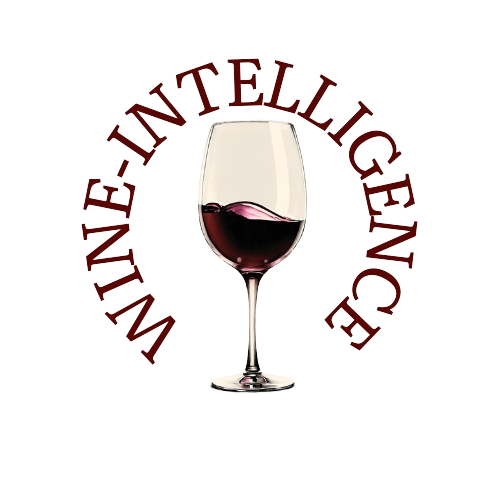As we transition from the post-Covid euphoria into a more stable and complex landscape, the wine industry finds itself in a period of adjustment.
After the dramatic surge in consumption during 2022 and 2023, 2024 presents a more balanced reality—characterized by a slowdown in consumer spending, shifting trends, and new challenges. From the decline in Champagne sales to the increasing demand for low- and no-alcohol options, key players in high-end Italian wine distribution, such as Cuzziol Grandivini, Gruppo Meregalli, Sarzi Amadè, and Sagna, have shared their insights into the factors that shaped the past year and the strategies that will define 2025.
The End of Post-Covid Euphoria and Champagne’s Decline
For many, 2024 can be seen as the year the wine market finally returned to a sense of normality, after the post-pandemic boom that inflated sales in 2022 and 2023. However, as the dust settles, it's clear that the industry faces several emerging issues, particularly the decline in Champagne sales. The once-celebrated “carpe diem” mindset that drove demand during the pandemic is now over, and even iconic Champagne producers have not raised their prices in 2024—a first since the 2008-2009 period.
Luca Cuzziol, head of Cuzziol Grandivini, remarks that this year has been complex, particularly in the latter half, with sales showing a contraction due to various external factors. He points out that Champagne sales, once a symbol of celebration, are now experiencing a noticeable decline. Even Prosecco, long considered the go-to sparkling wine, is showing a stagnation in domestic markets, though it continues to perform globally. Cuzziol notes that this decline signals the end of an era, and businesses must adapt by focusing on strategic thinking rather than relying on past success. "For wine, we are seeing a shift away from the classic aperitif moment," he observes, stressing the need for alternative offers to reignite consumer curiosity.
A Complex 2024 Vintage, with Lessons for 2025
The 2024 vintage, while overall positive, has been complex. Factors such as inflation, health-conscious trends, and shifting consumer behavior have all contributed to the overall challenges faced by distributors. These dynamics, combined with ongoing geopolitical instability and the effects of climate change, particularly adverse weather events impacting tourism and retail, have created a difficult market to navigate.
Despite these hurdles, Marcello Meregalli of Gruppo Meregalli reflects on a record year for the company, with the wine sector growing by 6%. However, he recognizes that the industry's pricing policies in recent years may have been detrimental to the overall health of the market. While high-end wines such as Brunello and Barolo have held strong, he notes the wider industry needs to adapt to a polarized market, where consumers are increasingly leaning towards high-quality products or mass-market alternatives, depending on their budgets.
For Meregalli, the future lies in promoting a culture of conscious and moderate drinking, especially when it comes to meals. "We need to focus on promoting the culture of drinking in a responsible and moderate way," Meregalli says, highlighting the importance of educating consumers on enjoying wine with food rather than seeing it as a stand-alone indulgence.
Low- and No-Alcohol: The Growing Trend
The trend towards low- and no-alcohol wines and spirits is undeniably on the rise, particularly among younger consumers who are more health-conscious and increasingly wary of the alcohol industry’s effects. This shift in preference is reflected in distributors like Marcello Meregalli’s decision to introduce such options into their portfolios. While some, like Alessandro Sarzi Amadè, admit they were initially skeptical about non-alcoholic wines, they are now seeing their potential due to changing consumer health attitudes.
Sarzi Amadè, who heads Sarzi Amadè, comments on the growing popularity of Spritzes and other low-alcohol cocktails among Millennials and Gen Z. These drinks have simpler narratives, making them more accessible than the often more complex stories surrounding wine. He underscores the importance of revisiting how wine is communicated to younger generations. "A Spritz is easier to understand than a glass of wine," he states, pointing to the need for simpler, more direct marketing that resonates with today’s youth.
The Road Ahead: Strategic Vision for 2025
The insights shared by key distributors paint a picture of an industry at a crossroads. As the dust settles from the post-Covid euphoria and the impact of external factors such as inflation and changing consumer habits takes hold, the wine sector must look toward 2025 with careful planning and strategic vision. For Luca Cuzziol, the key to navigating the upcoming years is to avoid the "perfect storm" by investing in a forward-thinking approach that combines product innovation with a deep understanding of market trends.
Cuzziol's push for a more strategic and business-conscious vision is echoed by his fellow distributors. For instance, Sarzi Amadè emphasizes the importance of ongoing engagement with clients, stressing that success in 2025 will depend on maintaining close relationships and a constant presence in the market. Similarly, the Sagna brothers, representing Sagna distribution, foresee an increased polarization between mass-market wines and premium products. Their outlook on the future reflects a shift towards higher-end consumption, even as the broader market contracts.
Adapting to Changing Consumer Preferences
As distributors navigate the challenges ahead, a few key trends stand out. First, the decline in Champagne sales seems likely to continue, prompting brands to rethink their appeal and marketing strategies. Secondly, the continued rise of low- and no-alcohol beverages presents an opportunity for innovation, particularly for those willing to explore new product categories. Finally, with a fluctuating global economy and shifting cultural attitudes, distributors must focus on delivering quality products while adapting to a more discerning, health-conscious consumer base.
Source: WineNews

